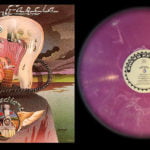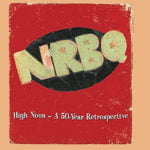It’s the time of year for saving money!
Older audiophiles probably know all this stuff already, but for anyone who does not immediately recognize the names in the headline I have some serious backstory to lay on you. Of course, anyone who’s ever held an electric guitar has heard the name Les Paul, which is attached to Gibson’s most popular solid-body electric guitar. That Gibson never ever made the exact guitar that Les Paul wanted them to make is a story for another, guitar-oriented, blog. What is more important for contemporary audiophiles is that Les Paul was responsible for the innovation of multi-tracking.
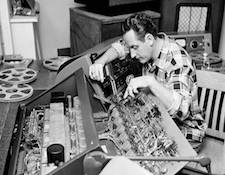 Of course, we all know what multi-tracking is, right? That is the practice of recording onto one channel and then recording onto other channels with additional tracks and combining them to make the final version. When Les Paul first began experimenting with multi-tracking he certainly did not have a digital recorder. In fact he didn’t even have a tape recorder. Les’ first experiments were done with cutting lathes and lacquers. He would record onto a lacquer and then play it back. During the playback he would play another part and record both his previously recorded part and the new part onto a second lathe and lacquer. If he wanted a third part he would take that second lacquer and play it back while laying down a third track. The drawbacks of this technique were that the signal-to-noise ratio dropped precipitously with each generation. But even with the fidelity issues, Les Paul’s version of “How High the Moon” which featured his new multi-tracking technique was a revelation which led, inexorably, to the 64-track (and more) recordings of today. In many ways multi-tracking heralded the beginning of the end for “purist” recording techniques that required every instrument to be played together in real time.
Of course, we all know what multi-tracking is, right? That is the practice of recording onto one channel and then recording onto other channels with additional tracks and combining them to make the final version. When Les Paul first began experimenting with multi-tracking he certainly did not have a digital recorder. In fact he didn’t even have a tape recorder. Les’ first experiments were done with cutting lathes and lacquers. He would record onto a lacquer and then play it back. During the playback he would play another part and record both his previously recorded part and the new part onto a second lathe and lacquer. If he wanted a third part he would take that second lacquer and play it back while laying down a third track. The drawbacks of this technique were that the signal-to-noise ratio dropped precipitously with each generation. But even with the fidelity issues, Les Paul’s version of “How High the Moon” which featured his new multi-tracking technique was a revelation which led, inexorably, to the 64-track (and more) recordings of today. In many ways multi-tracking heralded the beginning of the end for “purist” recording techniques that required every instrument to be played together in real time.
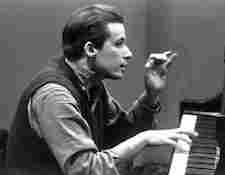 Nowadays only classical music connoisseurs immediately recognize the name Glenn Gould. He burst onto the classical music scene in the mid-fifties as a young wunderkind whose renditions of Bach were revelatory. Along with his musical gifts Gould brought a level of perfectionism that outdistanced even his own physical abilities. Gould finally concluded that he could not play anything as perfectly as he wanted to. His solution was another technical innovation that has remained with us to this day – the cut and paste recording.
Nowadays only classical music connoisseurs immediately recognize the name Glenn Gould. He burst onto the classical music scene in the mid-fifties as a young wunderkind whose renditions of Bach were revelatory. Along with his musical gifts Gould brought a level of perfectionism that outdistanced even his own physical abilities. Gould finally concluded that he could not play anything as perfectly as he wanted to. His solution was another technical innovation that has remained with us to this day – the cut and paste recording.
Instead of recording a piece from beginning to end, stopping only at the conclusion of each separate movement Gould began to record each phrase, sometimes over and over, and then he would choose the phrase that he preferred. That phrase was then physically spliced together with the previously acceptable phrases to make up the whole musical piece. This cut-and-paste method of recording was extremely labor-intensive, requiring engineers to cut and then reassemble individual pieces of tape. The end result was a “perfect” representation of Gould’s vision. The downside was that it was unreproducible live. Gould stopped playing live concerts and the remainder of his musical output was performed strictly in the studio.
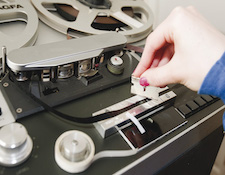 This level of perfectionism almost instantly became the standard for all classical recordings. Overnight it became usual and accepted recording policy to correct any clams (wrong notes) through editing. Suddenly all classical recordings required editing before they were deemed suitable for release. Even pop musicians caught on and recorded music was never the same.
This level of perfectionism almost instantly became the standard for all classical recordings. Overnight it became usual and accepted recording policy to correct any clams (wrong notes) through editing. Suddenly all classical recordings required editing before they were deemed suitable for release. Even pop musicians caught on and recorded music was never the same.
These two techniques – multi-tracking and cut-and-paste editing changed not only the way music was recorded, but also the kind of the music that was made. No longer did a musician have to be able to play a piece perfectly from beginning to end to make a recording. Also, no longer did everyone who played on a recording have to play at the same time, or even be in the same studio. These two techniques opened the doors for all “modern” recording. And these technical breakthroughs did not come from engineers or recording companies, they originated from musicians who needed to fulfil their own personal artistic visions.
With over seventy years of hindsight some audiophiles will tell you that these two methodologies “ruined” recordings because they sucked all the life and humanity out of the recording process. But without them so much recorded music would simply not exist that in my humble opinion their advantages far outweigh their more pernicious aspects. Bur perhaps that should be the subject of a separate blog…

